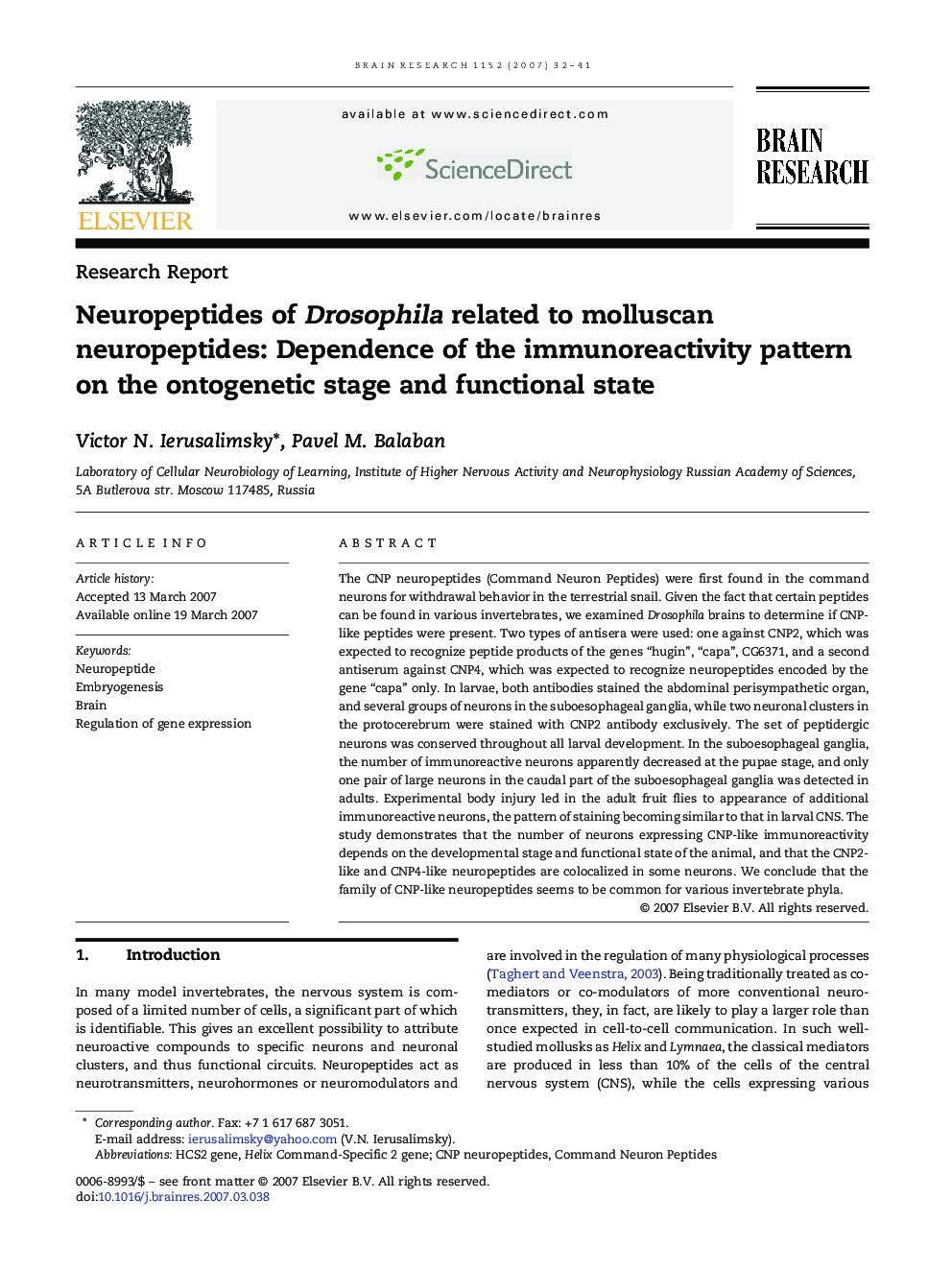| Article ID | Journal | Published Year | Pages | File Type |
|---|---|---|---|---|
| 4330985 | Brain Research | 2007 | 10 Pages |
Abstract
The CNP neuropeptides (Command Neuron Peptides) were first found in the command neurons for withdrawal behavior in the terrestrial snail. Given the fact that certain peptides can be found in various invertebrates, we examined Drosophila brains to determine if CNP-like peptides were present. Two types of antisera were used: one against CNP2, which was expected to recognize peptide products of the genes “hugin”, “capa”, CG6371, and a second antiserum against CNP4, which was expected to recognize neuropeptides encoded by the gene “capa” only. In larvae, both antibodies stained the abdominal perisympathetic organ, and several groups of neurons in the suboesophageal ganglia, while two neuronal clusters in the protocerebrum were stained with CNP2 antibody exclusively. The set of peptidergic neurons was conserved throughout all larval development. In the suboesophageal ganglia, the number of immunoreactive neurons apparently decreased at the pupae stage, and only one pair of large neurons in the caudal part of the suboesophageal ganglia was detected in adults. Experimental body injury led in the adult fruit flies to appearance of additional immunoreactive neurons, the pattern of staining becoming similar to that in larval CNS. The study demonstrates that the number of neurons expressing CNP-like immunoreactivity depends on the developmental stage and functional state of the animal, and that the CNP2-like and CNP4-like neuropeptides are colocalized in some neurons. We conclude that the family of CNP-like neuropeptides seems to be common for various invertebrate phyla.
Related Topics
Life Sciences
Neuroscience
Neuroscience (General)
Authors
Victor N. Ierusalimsky, Pavel M. Balaban,
